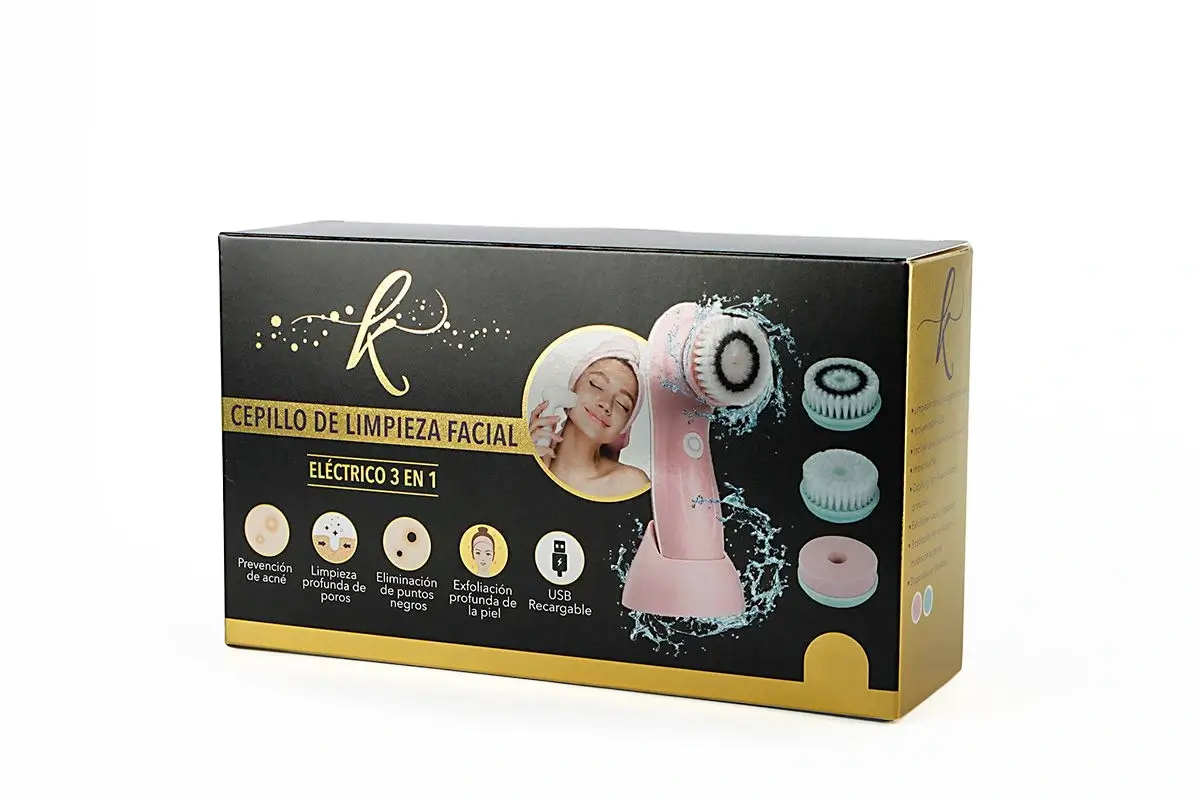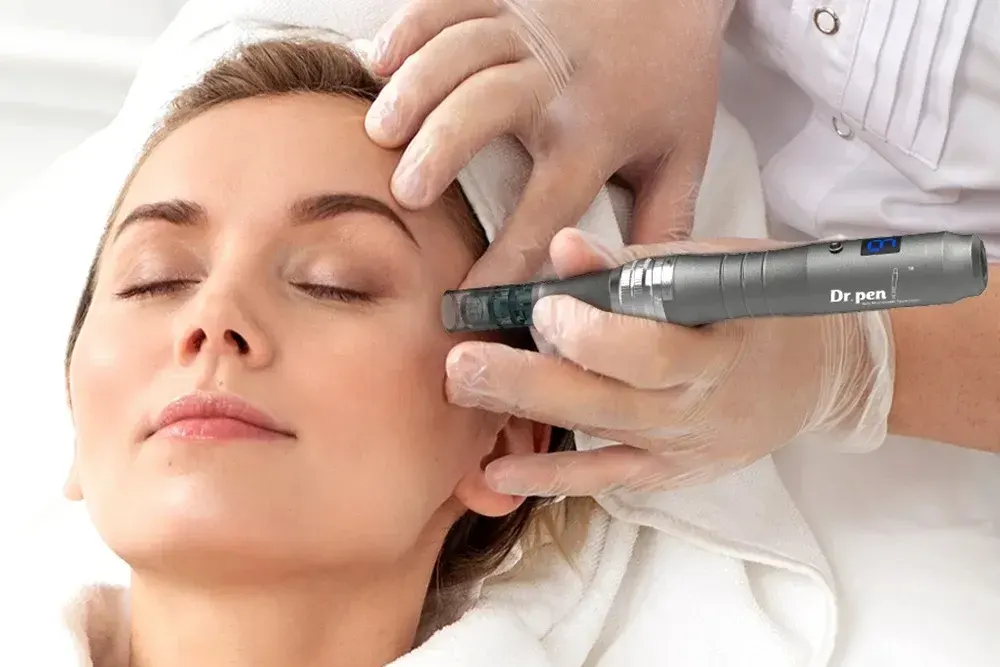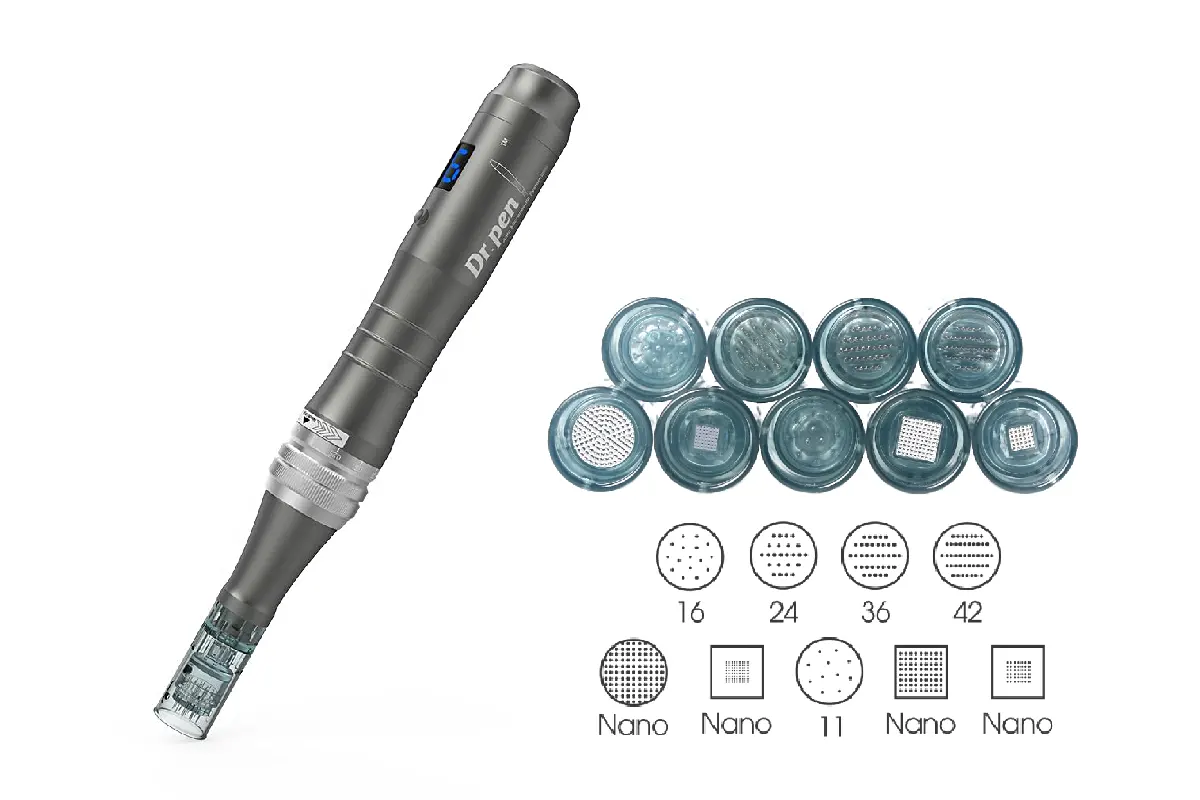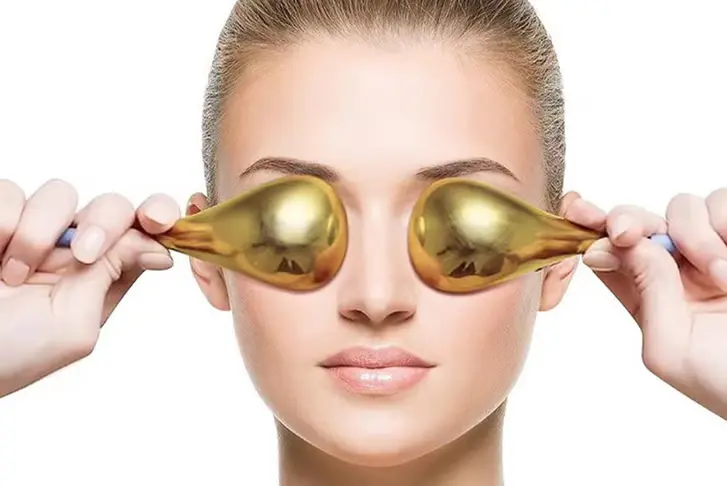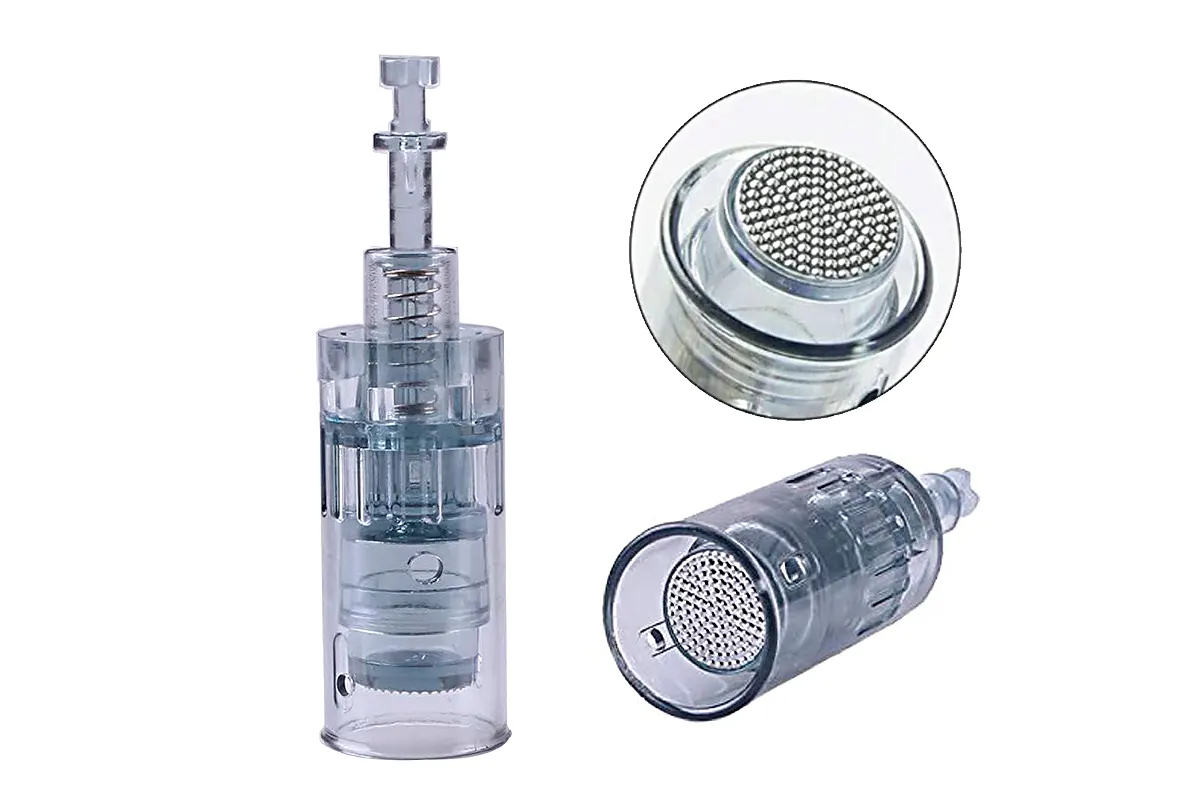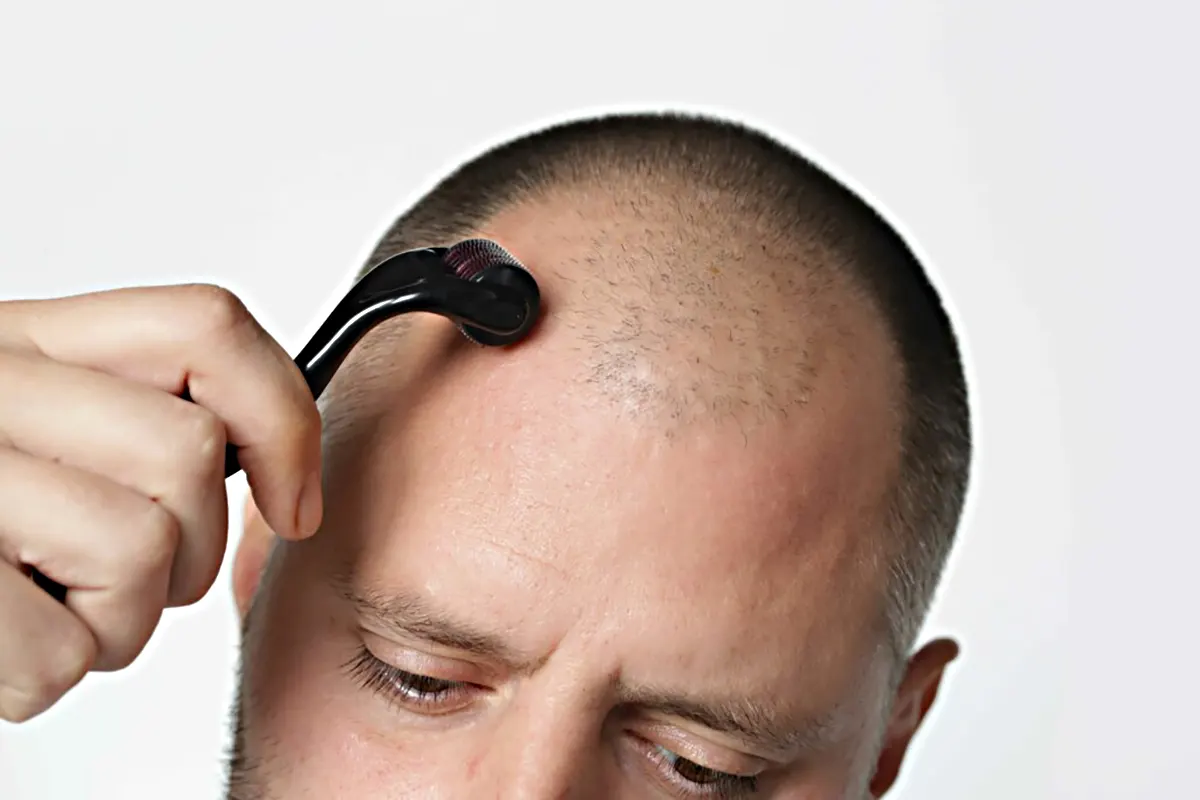This is a case shows how ROSEORCHID customize gold box for facial brush set product.
Compared with the cosmetics industry, many customers do not pay much attention to packaging in the beauty tools industry. But, the fact you need to know that good packaging will not add too much extra cost, it can greatly improve the consumer preference, retail price, and your brand premium of the product.
To improve the packaging grade of the color boxes made of conventional materials, the visual effect of gold foil and the frosted feel are two very effective means, but how can this effect be achieved? When you purchase multiple products, how to avoid the problem of the poor brand image due to inconsistent colors of packaging printed by different manufacturers?
The following case shows how we realized the packaging of the frosted gold foil box for two different products. The client is very satisfied with the finished box. Let’s explore it!
Case Background
The customer ordered two products, one face cleansing brush and one eyebrow trimmer, both are USB rechargeable.
Customized instructions and packaging are required. The production was soon arranged after the deposit received. However, the packaging design files have not been not received after the production proceeded for almost 3 weeks. You must know that the packaging production takes time, and the delay for the design files will affect the delivery of the entire batch of the goods.
At this time, the customer sent a reference picture and asked us if we could print a gold foil box.


The Customer's Initial Request
The customer only asked two things:
- The box should be printed with a gold effect.
- The box surface should be matte.
We know the pictures are just a rough idea, these two requirements are very rough and not detailed enough for a customized box. So before the box can be printed, there will be many details to be confirmed.
Since both boxes are in the same production, in this case, we show only the face cleansing brush box development as a case study.
Analyze Requirements & Identify Solutions
Analyze the pictures & raise doubts
- The first thing we need to know is what kind of gold printing effect the customer wants?
- Do all areas on the box need to be matte?
- The front of the box has some gold areas and texts, while the sides are full of gold, so are the gold on the front and side the same effect?
- There are dark gradient around the edges of the gold parts of the box, are these parts needed to make a gradient gold effect?

In-depth communication to understand the client's needs
Frankly speaking, there are so many ways to do gold printing on the market today, and the visual effect of each method is different. It is best that the guest can provide some reference pictures or real boxes of the effect he wants so that we can determine which printing method to achieve it.
However, after communicating with the customer, we learned that the customer himself is not very clear about the effect he wants, the rendering was done by their design department and they did not have a clear idea of how the printing method would be. Therefore, we can only provide different solutions based on our experience for him to choose.

Provide Solutions for The Customer to Choose
Based on the client’s design files, we communicated with the packaging supplier to see how many possible options are available.
Which is the best printing result and how much will the cost increase? If the current cost remains the same, which printing method can be used to achieve it?
Soon, we preliminarily confirmed 5 options to choose from, and attached the related renderings:

Made of single coated paper with matte oiled on the whole surface, the golden part is with bronzing treatment.
Features: The bronzing process is often used on small-area logo or patterns. If the processing area is too large or scattered, it is often difficult to finish. Moreover, such printing cost will be charged by the hot stamping area.

This solution uses the method of printing imitation gold with four-color (CMYK) printing. It is a low-cost production solution. The production cost is the same as the cost of an ordinary color box fee.
Features: No metallic reflections, no graininess, and the gold look a bit fake.

Gold cardboard is used as the printing material, the gold part is the material color, the non-gold part will be covered with white ink and then printed, the whole surface will be with a matte film finally.
Features: The metal reflections and graininess are obvious, but no matte feel. Not realistic, the cost will also increase. Moreover, the hue of gold is completely determined by the cardboard itself and cannot be freely chosen.

Silver cardboard is used as the material, the golden part is printed with spot color gold or CMYK gold, the non-gold part will be covered with white ink then printed, and the whole box will be with a matte film.
Features: The metal reflections and graininess are obvious, but no matte feel. Not realistic, the cost will increase. The hue of gold can be controlled by ink, and easy to make blue gold, gold, red gold and other desired effects.

Silver cardboard is used as the material, the golden parts are printed with spot-color gold or CMYK gold, non-gold parts will be covered with white ink and then printed, the entire box will be made reverse UV treatment to get a matte finish.
Features: The metal reflections, graininess, and matte feel are all obvious, the cost will increase higher. Moreover, the hue of gold can be controlled by ink, blue gold, pure gold, red gold, and other gold color are all available to achieve.
Pro & Con for Each Option
- Option A. Stamping process is often used on small localized areas of logos or patterns. It is often difficult to deal with an area that is too large and scattered, and the cost will be very high if you charge by the hot stamping area. In the design document, we know the gold part is too much and too scattered. From the point of view of difficulty and cost, option A may not be suitable.
- Option C. For gold cardboard material, the supplier mentioned that the color would be different for each purchase, as they bought them from the paper factory. But, silver cardboard printing can achieve the same effect, and the color difference between each will be small. We thought that if the customer repeated the order in the future, he would definitely be unhappy if the printing effect were too much different from that of previous batches. So we directly recommend the customer to use silver cardboard.
- Therefore, we believe that the three options B, D, and E are feasible and sent them to the customer. The effects for each are different. Customers need to consider various factors, such as performance, cost, attractiveness, etc. to decide on the final plan.
Two weeks later, the client confirmed to use of option E (Silver Cardboard Printing + Reverse UV treatment), because he needs “metallic reflective” on a “matte” feel box.
At the same time, the customer confirms that all the gold parts are made in solid gold, there is no gradient with darkened edges. The final design file was also received.

Detail Communication and Samples Confirmation
Principle of Reverse UV

Small particles of oil droplets formed by the “mutual repulsion” of primer and varnish
Confirmation of Box Finish Details
According to our knowledge and the advice by the printing house, there can be both matte and glossy finish on one box, such a box looks more beautiful and the printed content is also clearer. So we communicated with our customers as follows:

We suggest our customer to make the background color (mainly black and gold area) into frosted effect, and the product body, accessories, and some explanatory illustrations into frosted effect. In this way, the product can be displayed more prominently, while most areas of the box get a good frosted effect and a high-grade feel.
The above figure is the frosting area color chart. The light blue area is the frosted effect area, with both primer and varnish, the white area is the glossy area, with only varnish, no primer.

Since the silver cardboard itself is colored, we need to first apply white ink to the entire box except for the gold area in order to ensure the accuracy of the printed color.
The picture above shows the chorochromatic chart for printing white ink.
The white area can be printed directly, the pink area needs to be pre-printed with white ink.
The reason why the gold areas are not covered with white ink is because we need to use the reflective effect of the silver cardstock to make the gold color more realistic. If these areas are also covered by white ink, the reflective effect will not be very good.

Since gold is a color family, not a single color, so there are various color values to choose from, including reddish gold, greenish gold, yellowish gold, and so on.
Through communication with the customer, we learned that although a CMYK color value for gold had been given in the design file, it was only done randomly by the client's designer.
The customer himself does not have an intuitive knowledge of the desired gold color value.
In view of this, we printed different CMYK values of gold for the customer to choose from.
After all these details are confirmed, we start to arrange digital samples.
1st Digital Samples
We did a digital proof. The frosted and the gold effect were as we expected and looked much good.
However, there were some other problem with the folds of the box, yes, it’s the “cracked fold”. After the box was folded, the ink was exposed at the folding position, revealing the base silver color of the cardboard material. This is very ugly and a definite defect. It’s must be solved!

After communicating with the box supplier, we learned that there is a risk of “cracked folds” when using silver cardboard to make boxes with reverse UV finish. This risk is determined by both the silver cardboard and the principle of reverse UV. And luckily there are some measures to reduce this risk.
Finally, we decided to use the “hollow” treatment in the folded line position to solve the problem. This means that the folded line is made glossy instead of frosted.
The image below shows a comparison of the frosted area before and after hollowing out the folded position. The blue part is the frosted area, and the white part are glossy areas.

It can be seen from the above frosted area picture. A 1mm wide white line is added to all folded line positions of the box. This white line is the newly added hollowed-out area, only one layer of varnish will be applied there, and gets glossy surface, no longer a reverse UV frosted effect.
2nd Digital Samples
We did digital proofing and took a video for the customer to check. He is satisfied and mentioned it was exactly the effect he wanted. So we arranged the box production.

Mass Production Arrangement
We calibrated the color separation and 3D effect of the two boxes, including color value, reverse UV area, white ink area, etc. After proofreading, the mass production of two boxes was arranged.


The actual mass production is better than digital proofing, and the guests are much happy. After all, digital proofing and actual mass printing are two different operational processes, the machines and inks used are also different.

Below are two close-ups of the surface of the box. We can see that the surface of the gold and black areas is a matte frosted effect formed by many small particles, which feels quite good.
The position of the folded lines can obviously be seen to be made of smooth surface. This can minimize the risk of “cracked folds” as much as possible.


Summary
It is necessary to understand what the customer’s requirements are. If the customer does not know also, we need to propose a variety of professional solutions for him to choose.
Below are pictures of two boxes that were made in the same printing house and are fairly uniform in color. This is very beneficial for brand building.

For the uncommon color box printing methods and surface treatment, proofing is a very important part. It is impossible for the printing factory to realize various potential problems when receiving the design files. Only through proofing can we find and propose them, then get solutions to avoid potential mistakes in mass production.
In the beauty/personal care industry, many factories in Guangdong/Zhejiang only produce 10 or 5 or less products. The scale of the factory is limited, and the salesmen are not very willing to do custom packaging, they prefer to get wholesale orders in factory’s standard package. It’s more or less difficult to communicate with the factories for a customized package. At this time, we can only solve the problem through our own professional packaging suppliers.
Our designers and sales have a strong sense of responsibility, outstanding professional ability and are very patient in communication. In this cooperation, it took more than 2 weeks to confirm only the printing methods and surface treatment, this customer affirmed and praised our professionalism and looked forward to more cooperation in the future.

